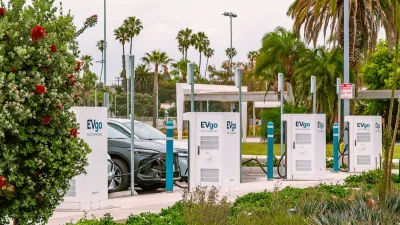In her news article and blog, Rebecca Smith examines the reduction in electricity consumption in the U.S. - the causes and how utilities have reacted to remain profitable.
The population is increasing, and we've become more reliant on electric-powered devices - either the plug-in type or those that need to be recharged frequently, yet the increase in power consumption for households is a mere .7% annually - and projected to remain there through 2040, according to the Energy Information Administration (EIA). Industrial users are also consuming less too - increasing .7% annually.
How can this be? Rebecca Smith provides the perspective from the utility sector - and their investors.
"The erosion of U.S. manufacturing has contributed to the consumption slowdown. Industrial electricity use, which includes manufacturing, accounts for about a quarter of the nation's total. From 1998 to 2010, the electricity used for manufacturing fell 18% as industrial processes grew more efficient and companies produced fewer goods in the U.S."
As for households, as a result of federal regulations requiring greater energy efficiency, all those gadgets and appliances are far more energy efficient than they might otherwise have been.
While this may sound like good news for the environment, it has put stress on power providers.
Rather than investing in new power plants, some utilities are investing in high-voltage transmission lines "because federal regulators are allowing them to collect above-average returns from customers on those outlays to encourage new investment in the nation's aging power networks."
In her blog, Smith takes a deeper look into the drop-off in energy consumption.
"Changes in demographics have an impact. The steady migration of Americans from cooler to warmer states has cut electricity use because cooling a building requires less energy than heating one (although many people assume the opposite).
Milder winter temperatures from 1960 to 2010 also helped chip away at electricity consumption, according to the Energy Information Administration.
About the only bright spot for utilities – looking ahead to largely lackluster sales for commodity electricity – is the transportation sector.
To encourage plug-in cars, many utilities are rolling out special electricity rates for cars that give them a cut-rate deal if they charge overnight, when the electric system has loads of excess capacity."
Learn the facts about electricity consumption from the EIA.
Contributor's note: Access to Wall Street Journal articles may be time-restricted for those without a subscription.
FULL STORY: U.S. Electricity Use on Wane

Alabama: Trump Terminates Settlements for Black Communities Harmed By Raw Sewage
Trump deemed the landmark civil rights agreement “illegal DEI and environmental justice policy.”

Planetizen Federal Action Tracker
A weekly monitor of how Trump’s orders and actions are impacting planners and planning in America.

The 120 Year Old Tiny Home Villages That Sheltered San Francisco’s Earthquake Refugees
More than a century ago, San Francisco mobilized to house thousands of residents displaced by the 1906 earthquake. Could their strategy offer a model for the present?

Ken Jennings Launches Transit Web Series
The Jeopardy champ wants you to ride public transit.

BLM To Rescind Public Lands Rule
The change will downgrade conservation, once again putting federal land at risk for mining and other extractive uses.

Indy Neighborhood Group Builds Temporary Multi-Use Path
Community members, aided in part by funding from the city, repurposed a vehicle lane to create a protected bike and pedestrian path for the summer season.
Urban Design for Planners 1: Software Tools
This six-course series explores essential urban design concepts using open source software and equips planners with the tools they need to participate fully in the urban design process.
Planning for Universal Design
Learn the tools for implementing Universal Design in planning regulations.
Clanton & Associates, Inc.
Jessamine County Fiscal Court
Institute for Housing and Urban Development Studies (IHS)
City of Grandview
Harvard GSD Executive Education
Toledo-Lucas County Plan Commissions
Salt Lake City
NYU Wagner Graduate School of Public Service





























